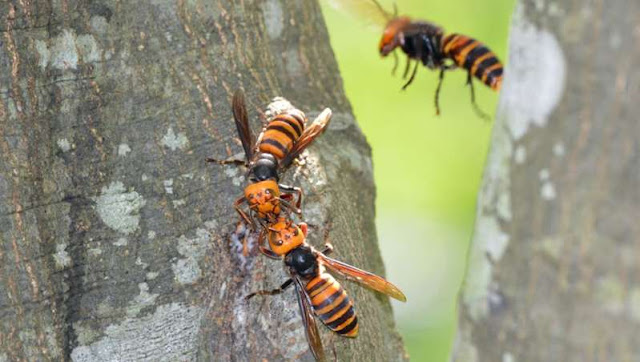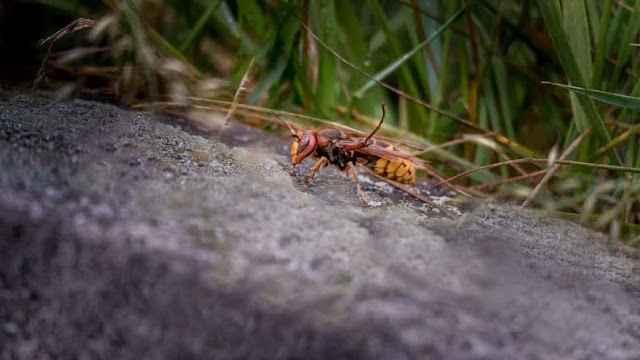Originally posted at Mother Earth News:

We have resided in our small cabin at an elevation of 9,800 feet for over 23 years full-time. We do not have any close neighbors and with an absence of human activity, we do have many animals around us. During that period of time, we often saw deer, elk, bear, bobcat and the occasional mountain lion. We carefully observe their behavior and conduct ourselves accordingly so as not to disturb their lifestyle and maintain a safe environment for ourselves. We also have abundant small critters which can be far more dangerous than the larger predators.
Bears
Our experience has not been consistent with all the articles and stories I’ve read about bears. During those many years, we have not had encounters that posed an immediate threat to our safety. When we are out working, we will often be surprised by a bear but we don’t panic or get excited. Instead, we let the bear take time to realize we are not a threat to it. After the bear has evaluated the situation and assured itself there is no threat, it will inevitably amble off. Most of the bear activity is at night, and we only know they were around because of the clawed-up tree stumps, logs and large rocks turned over.

Mother bear with cubs. Encounters have included mother bears and cubs. If the mother bear senses any danger to her cubs, she could become aggressive quickly to deal with the danger. I couldn’t count how many encounters we have had with mother bears and cubs, but some as close as 12 to 15 feet between us. Most of those encounters were where the mother bear would teach her cubs how to avoid humans.
Bear behavior. When the mother bear sits down and uses us to train her cubs, we realize we are simply being her tool and she means no harm. These episodes have lasted for up to 20 minutes. If, however, a bear lowers its head and swings it from side to side, you need to slowly back off and give the bear room. Sometimes they will rock sideways from foot to foot and that too is not a good indication, nor is huffing at you. If they feel threatened, they are very powerful animals and could become aggressive quickly, so we just talk in a calm tone and back away slowly.

Elk and Deer
Elk. Every year, we have large herds of elk around us. We have witnessed some strange activity from the elk that I am at a loss to explain. Each fall, the various elk herds tend to congregate around our property. There can be up to five to six individual herds that all come together for a day or more in the fall during the rut. They all mingle and congregate around our home and then by some secret signal only, they seem to know they break up and go their individual way. The bulls get along with each other and when they leave, they all seem to leave with the cows they came with. We have witnessed this "elk convention" several times and still mystifies us when it happens.

Deer. We have deer around almost every single day when the snow isn’t so deep they can’t function well. The deer are a joy to have around. When I’m outside working, the deer seem to get used to seeing me and don’t run off in a panic. They generally just go on with browsing and don’t pay any attention to me. Early on in our lives here, I was outside picking up branches and a doe with two small fawns would follow me around while I talked to her. Her trust seemed instinctive and that went on for several days. When I was outside a young buck walked right up to me with no fear. I soon realized that it was one of the fawns that were with the doe years earlier. That started a relationship that continued on for many years.
Predators
Bobcats and lynx. We rarely see bobcats or lynx as they are very elusive, but we sometimes see evidence of them and their activity. We will see chunks of deer hair, blood or bones that they have left after a kill. These are no-nonsense cats and when we do see one, we give them more than enough room. A 35-pound bobcat is a mighty tough fighting animal and nothing to be trifled with.
Mountain lions. Much like bobcats, mountain lions are nothing to tempt or trifle with. We have had numerous encounters with some being within a few feet. When an unexpected encounter with a lion happens, that is no time to shrink or panic. Make yourself appear as large as you can and stand your ground. We have had them coil on the ground and hiss and snarl at us with lips curled back showing nasty-looking yellow teeth. Bu by standing firmly in place and facing them, they have, when they see an escape route, bounded off. Fortunately, lions try to avoid humans and while they are around, we don’t see them very often.
Coyotes and wolves. We often see coyotes and they only seem to want to defecate around the perimeter of our home to mark their territory. They do not hang around and normally are just passing through. We have seen wolves a few times and they tend to avoid people.
Small Varmints
We consider the white-footed mouse and pack rat to be more dangerous than larger predators. Some carry the hantavirus and various other diseases. When their feces dry out and go airborne, if inhaled they can infect people. We spray a 50/50 solution of water and Clorox in areas they frequent, which has been effective. Large predators seem to pose less risk than a tiny mouse or wood rat with a virus molecule that can kill us.
Our 23 years of experience has provided a wealth of knowledge about how to co-exist safely with the wild animals. This has been a fun blog post to write because as I wrote it, I remembered many of the encounters we have had.
Bruce McElmurray homesteads at high elevation in the Southern Rockies with his wife, Carol. For more on their mountain lifestyle and their observances of animals coupled with their strange behavior, visit Bruce’s personal blog site at Bruce Carol Cabin. Read all of his MOTHER EARTH NEWS posts here.
All MOTHER EARTH NEWS community bloggers have agreed to follow our Blogging Guidelines, and they are responsible for the accuracy of their posts.
The Animal Rescue Site is a place where people can help provide food and care to millions of animals in need, both in the U.S. and around the world. In addition to sharing personal rescue stories, shopping for the cause, and signing petitions, visitors can take just a moment each day to click on a purple button to help animals. Visit The Animal Rescue Site and click today - it's free!

Until next time….hug your animals. Tell them you love them. If you don’t have a pet, adopt one. Make adoption your first option when seeking a pet. Adopt. Don’t shop. Can’t adopt. Please consider fostering one. The animal will have the taste of home and the shelter will cover the expenses. Can’t foster? Make a donation or volunteer at your local shelter. Please, don’t hunt. Unless you’re starving down in a ditch somewhere, there is no logical reason to do so. Whatever you do, however you do it, please be a voice for the animals large and small. All it takes is one to make a difference, good or bad.

Together, you and I can make a difference in an animal's life. I’m one for the animals. Are you? Thanks for visiting. Stay safe. Be strong. Be happy. Smile. Show compassion. Be nice to one another. Pass it onward. If you like what you see here, please consider signing up to become a follower. Please feel free to share this post with others.
My writing Blog: http://sjfranciswriter.blogspot.com














